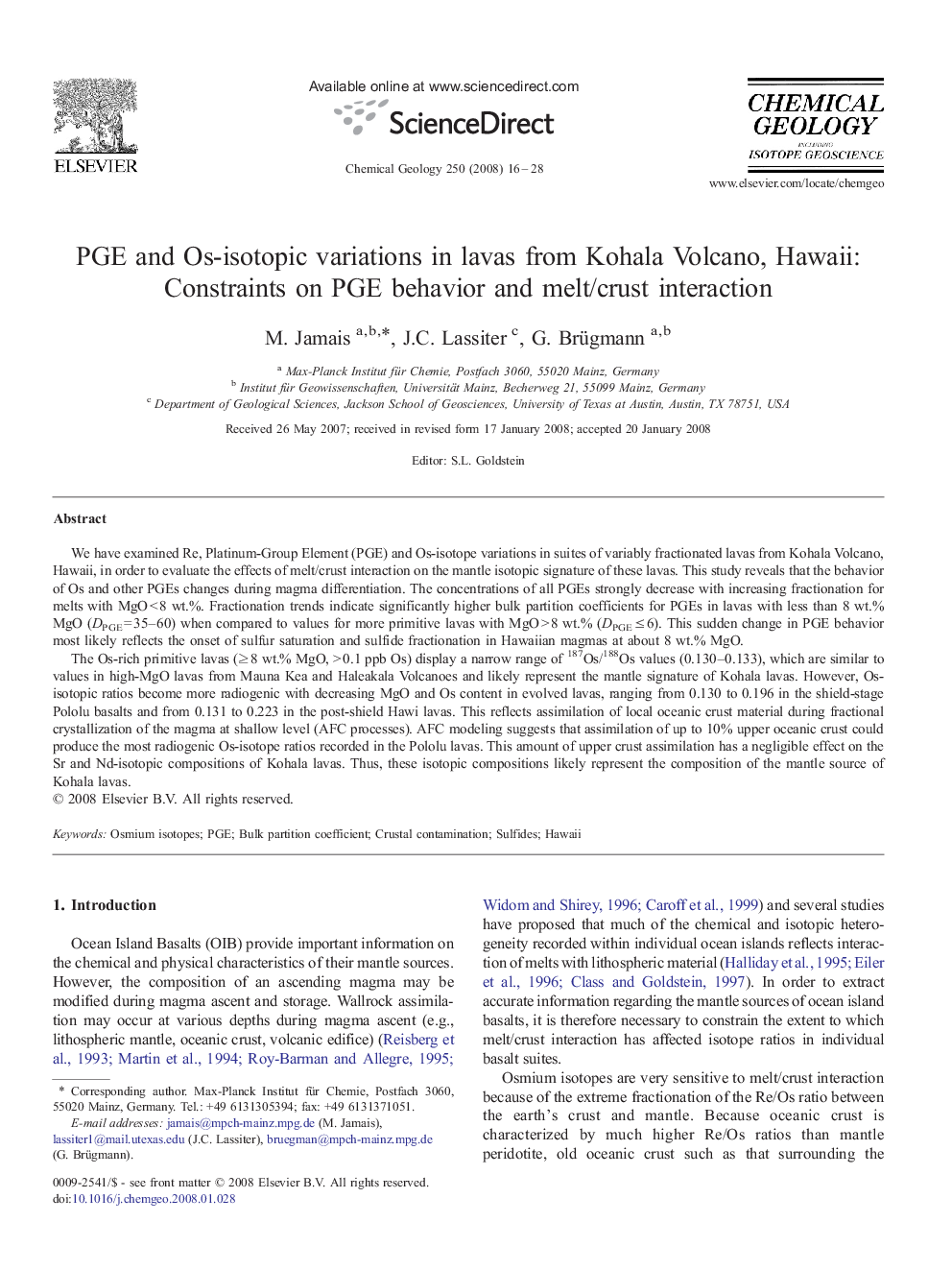| Article ID | Journal | Published Year | Pages | File Type |
|---|---|---|---|---|
| 4700805 | Chemical Geology | 2008 | 13 Pages |
We have examined Re, Platinum-Group Element (PGE) and Os-isotope variations in suites of variably fractionated lavas from Kohala Volcano, Hawaii, in order to evaluate the effects of melt/crust interaction on the mantle isotopic signature of these lavas. This study reveals that the behavior of Os and other PGEs changes during magma differentiation. The concentrations of all PGEs strongly decrease with increasing fractionation for melts with MgO < 8 wt.%. Fractionation trends indicate significantly higher bulk partition coefficients for PGEs in lavas with less than 8 wt.% MgO (DPGE = 35–60) when compared to values for more primitive lavas with MgO > 8 wt.% (DPGE ≤ 6). This sudden change in PGE behavior most likely reflects the onset of sulfur saturation and sulfide fractionation in Hawaiian magmas at about 8 wt.% MgO.The Os-rich primitive lavas (≥ 8 wt.% MgO, > 0.1 ppb Os) display a narrow range of 187Os/188Os values (0.130–0.133), which are similar to values in high-MgO lavas from Mauna Kea and Haleakala Volcanoes and likely represent the mantle signature of Kohala lavas. However, Os-isotopic ratios become more radiogenic with decreasing MgO and Os content in evolved lavas, ranging from 0.130 to 0.196 in the shield-stage Pololu basalts and from 0.131 to 0.223 in the post-shield Hawi lavas. This reflects assimilation of local oceanic crust material during fractional crystallization of the magma at shallow level (AFC processes). AFC modeling suggests that assimilation of up to 10% upper oceanic crust could produce the most radiogenic Os-isotope ratios recorded in the Pololu lavas. This amount of upper crust assimilation has a negligible effect on the Sr and Nd-isotopic compositions of Kohala lavas. Thus, these isotopic compositions likely represent the composition of the mantle source of Kohala lavas.
